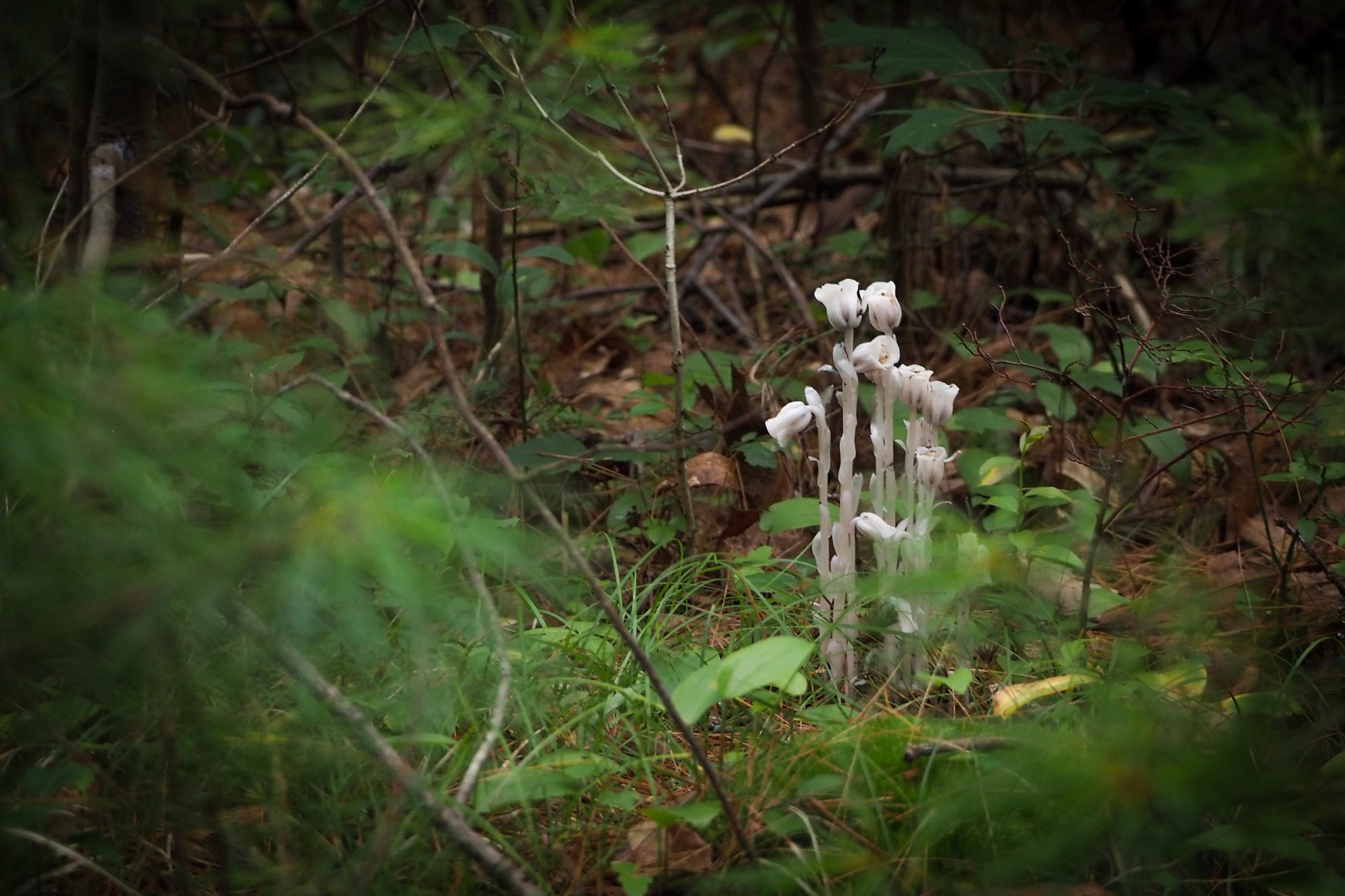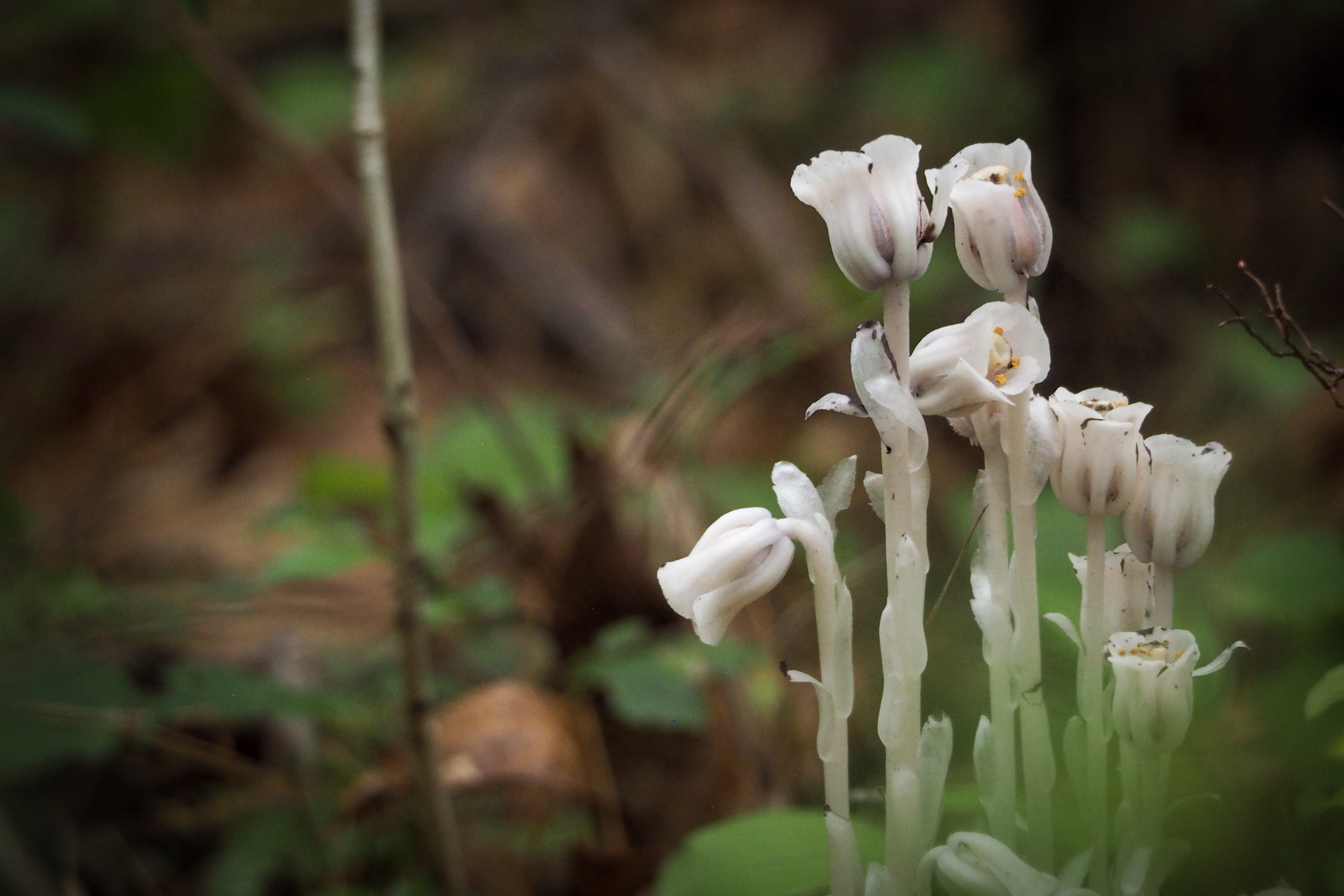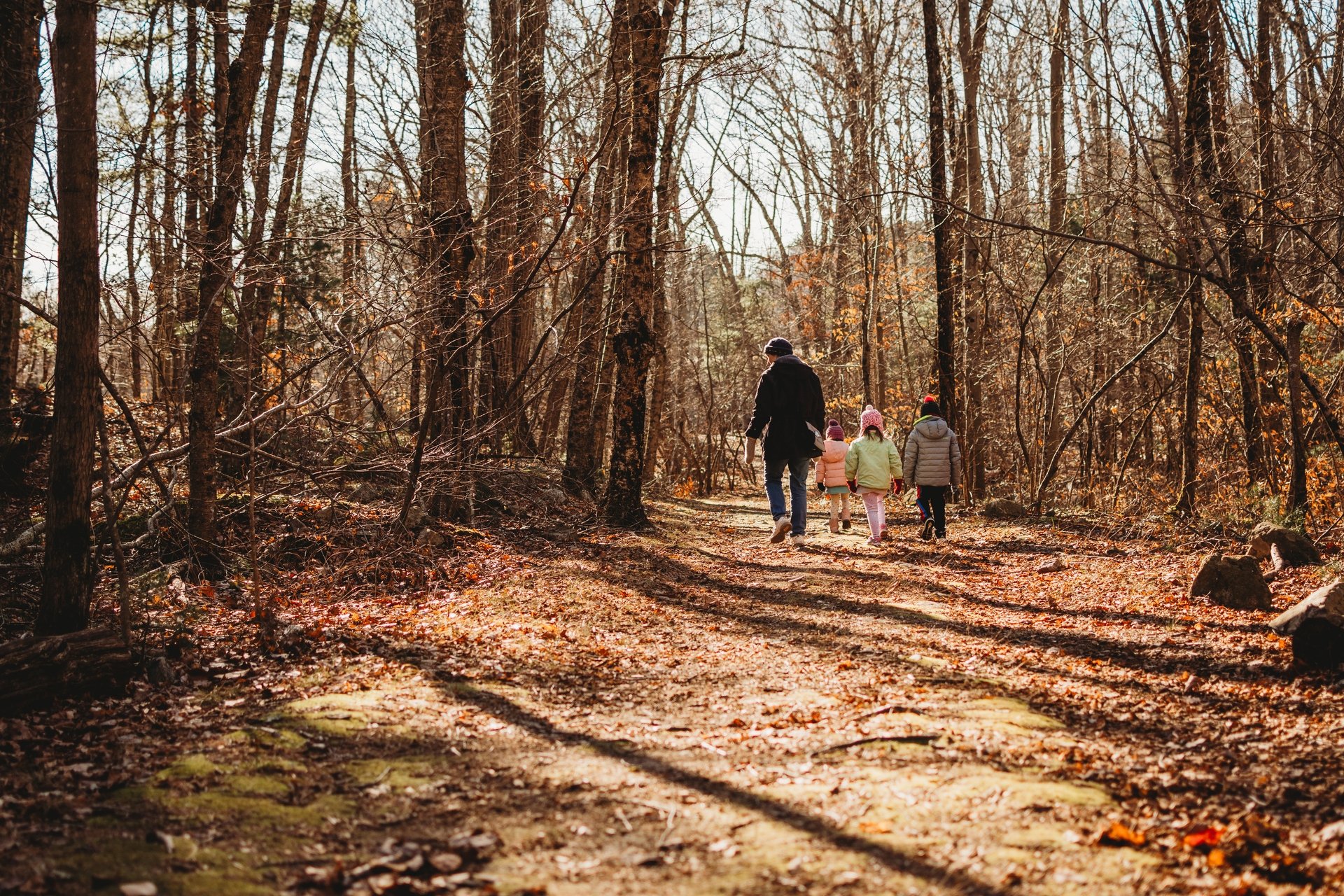Often mistaken for a cluster of mushrooms, the Ghost Pipe (Monotropa uniflora) is actually a perennial wildflower found across much of the United States and Canada. In Massachusetts, we see it pop up starting in June and lasting through September, when it turns brown, shrivels up, and drops its seeds for the next year’s plants.
Surviving Without Chlorophyll
Nearly all plants get their energy from a green pigment, chlorophyll, that allows them to trap the sun's energy to produce carbohydrates during photosynthesis. So how does the Ghost Pipe survive without this important feature?
Without photosynthesis, Ghost Pipes can't trap the sun’s energy, but they have adapted to draw carbohydrates and nutrients from mycorrhizal fungi that grow around the roots of trees. Mycorrhizal fungi help trees take up water and minerals from the soil, and in turn take carbohydrates and nutrients from tree sap to supply their energy needs. Ghost Pipes tap into and take advantage of the fungal network around the tree roots to feed themselves.
The lack of green chlorophyll leaves Ghost Pipes white and waxy, though you may see them pop up in a blush hue, too. However, Ghost Pipes aren’t the only local plants that lack chlorophyll. Members of a closely related genus, Hairy Pine-sap and Yellow Pine-sap also rely on their own symbiotic relationships with mycorrhizal fungi. Although they are rarer, you might spot them on the forest floor in shades of pink, orange, and yellow.
Where to Look for Ghost Pipe
Ghost Pipes love shaded, moist, mature forests. Since they rely on certain species of mycorrhizal fungi for energy, and these associate with many types of trees, keep an eye out for Ghost Pipes when walking through any well-established woodland. Once you find one patch, look around, as there will usually be another nearby living off the same fungal network.
Find Ghost Pipe at These Wildlife Sanctuaries
Stay Connected
Don't miss a beat on all the ways you can get outdoors, celebrate nature, and get involved.







